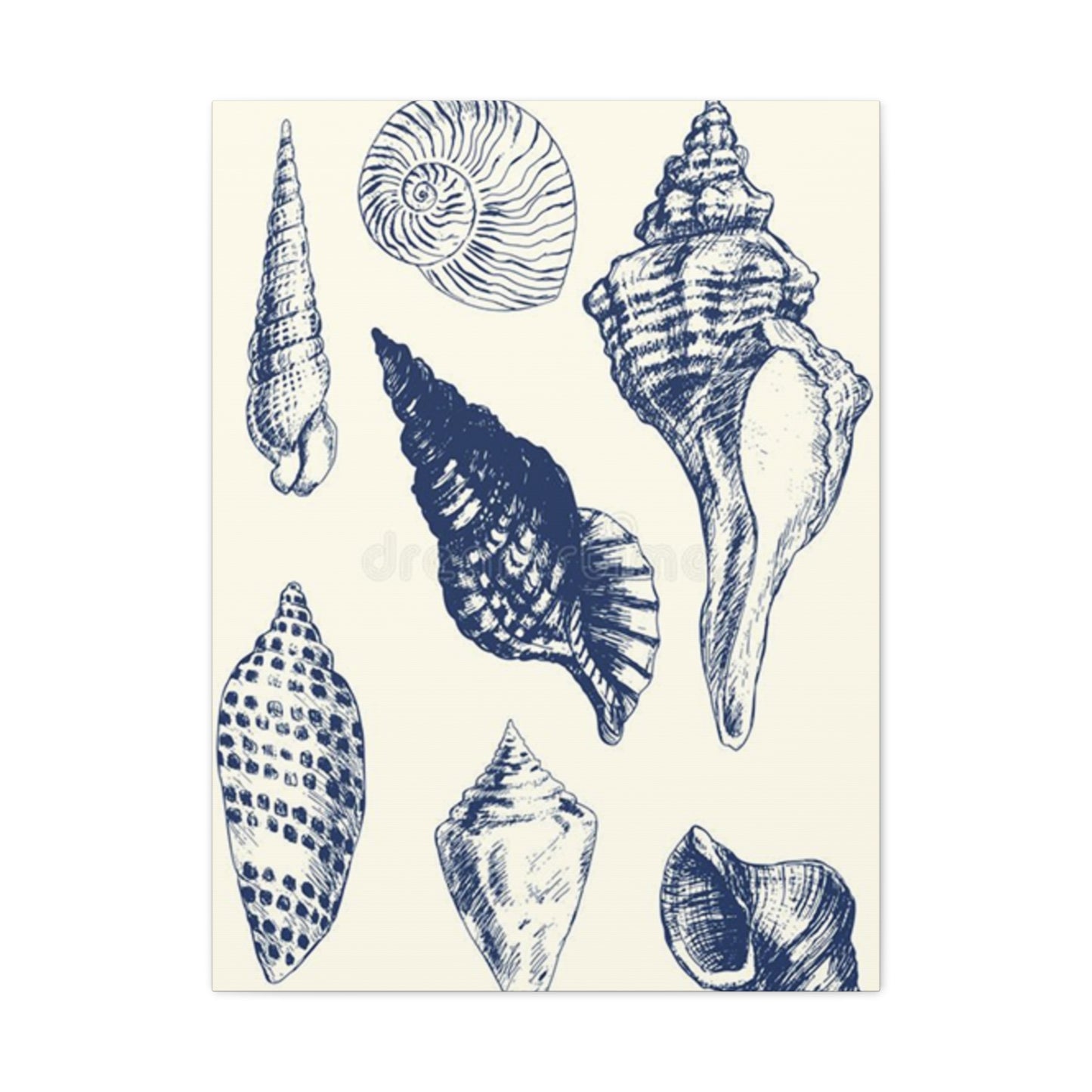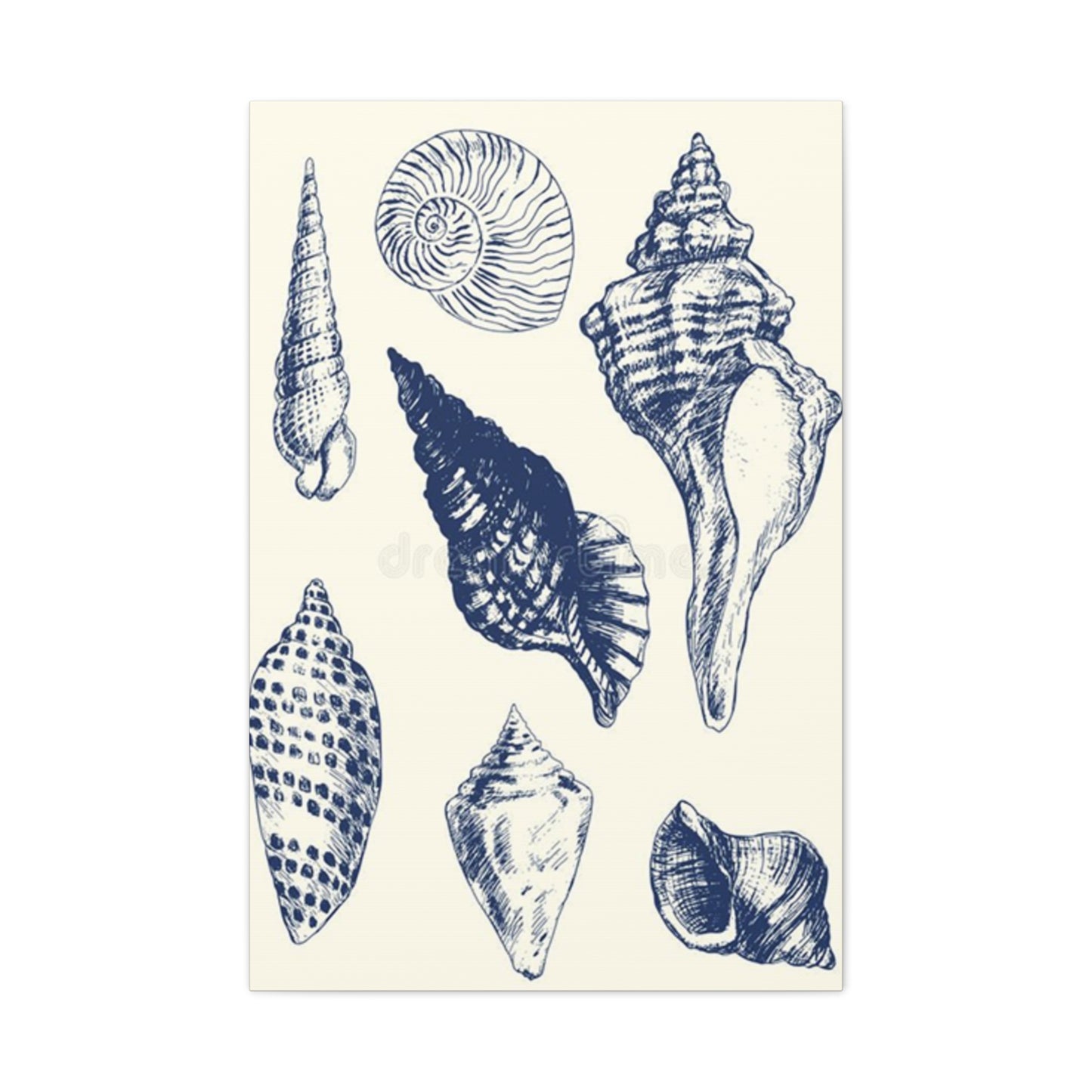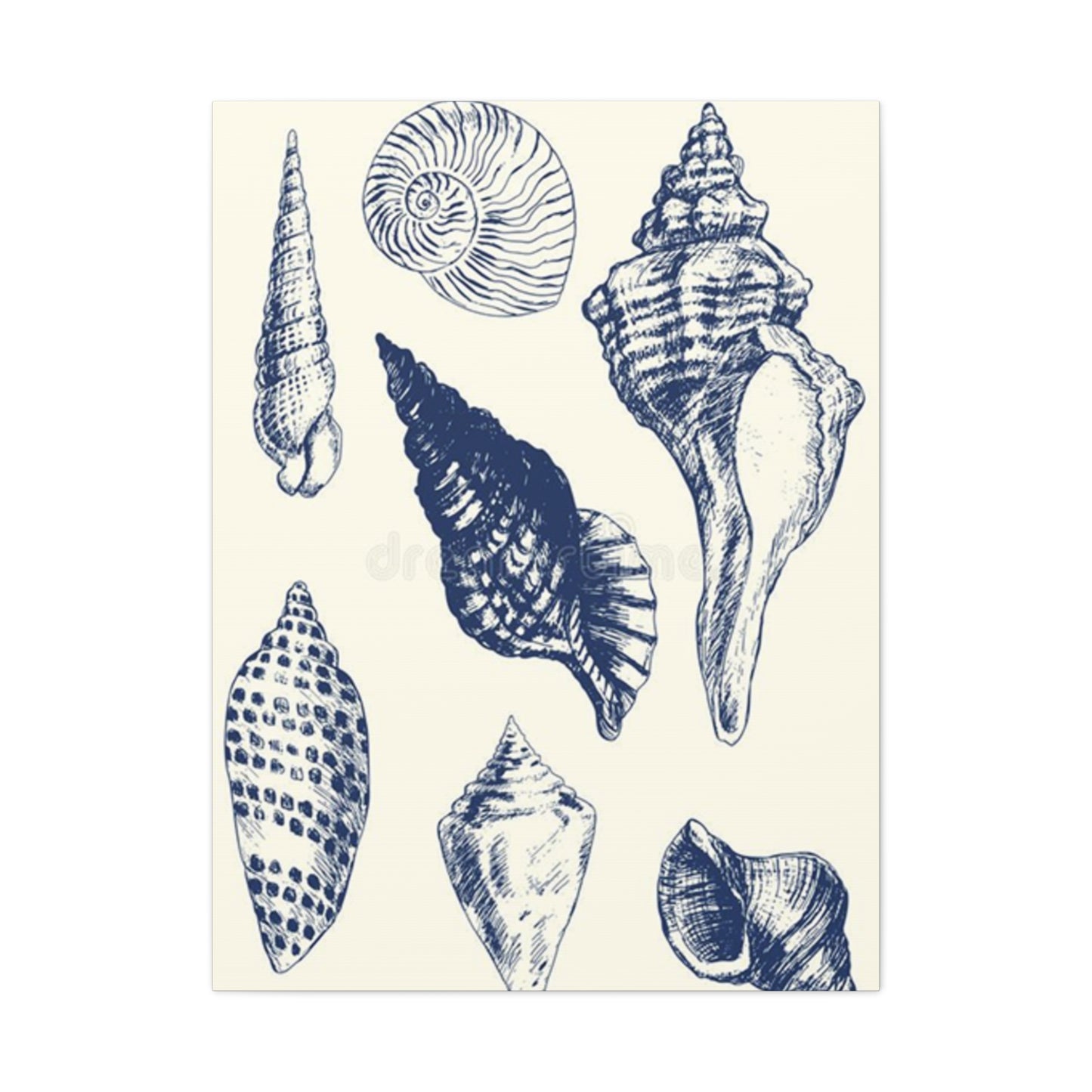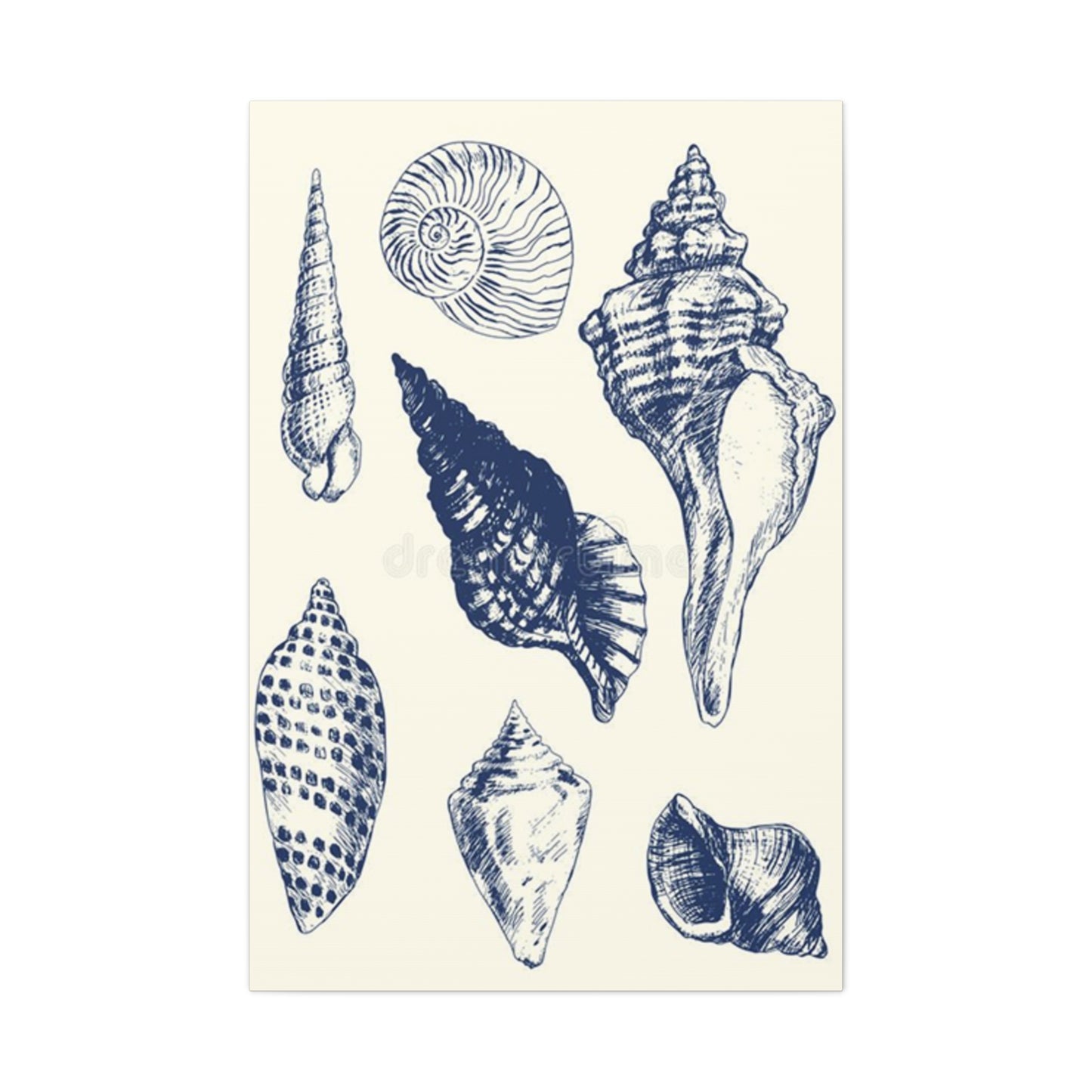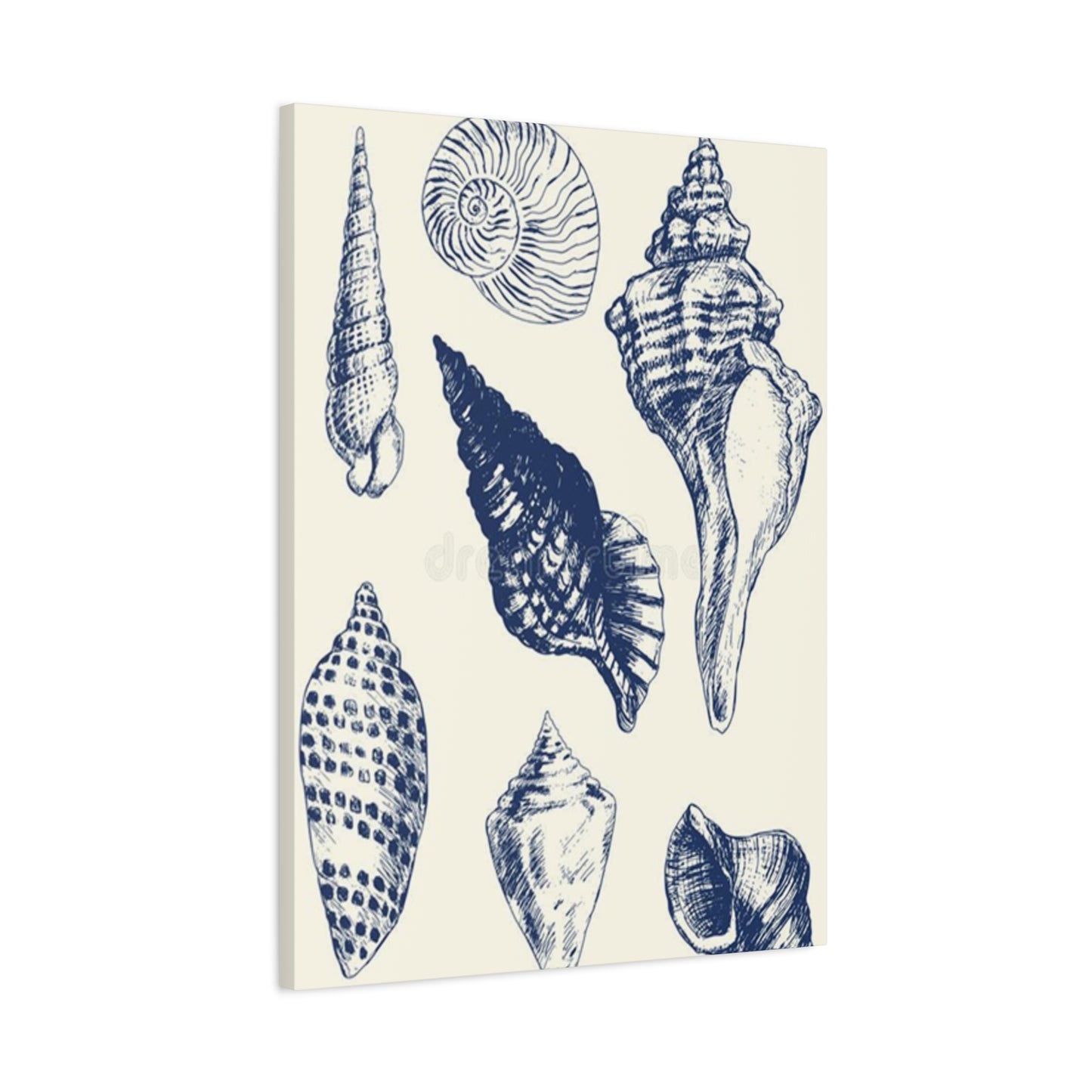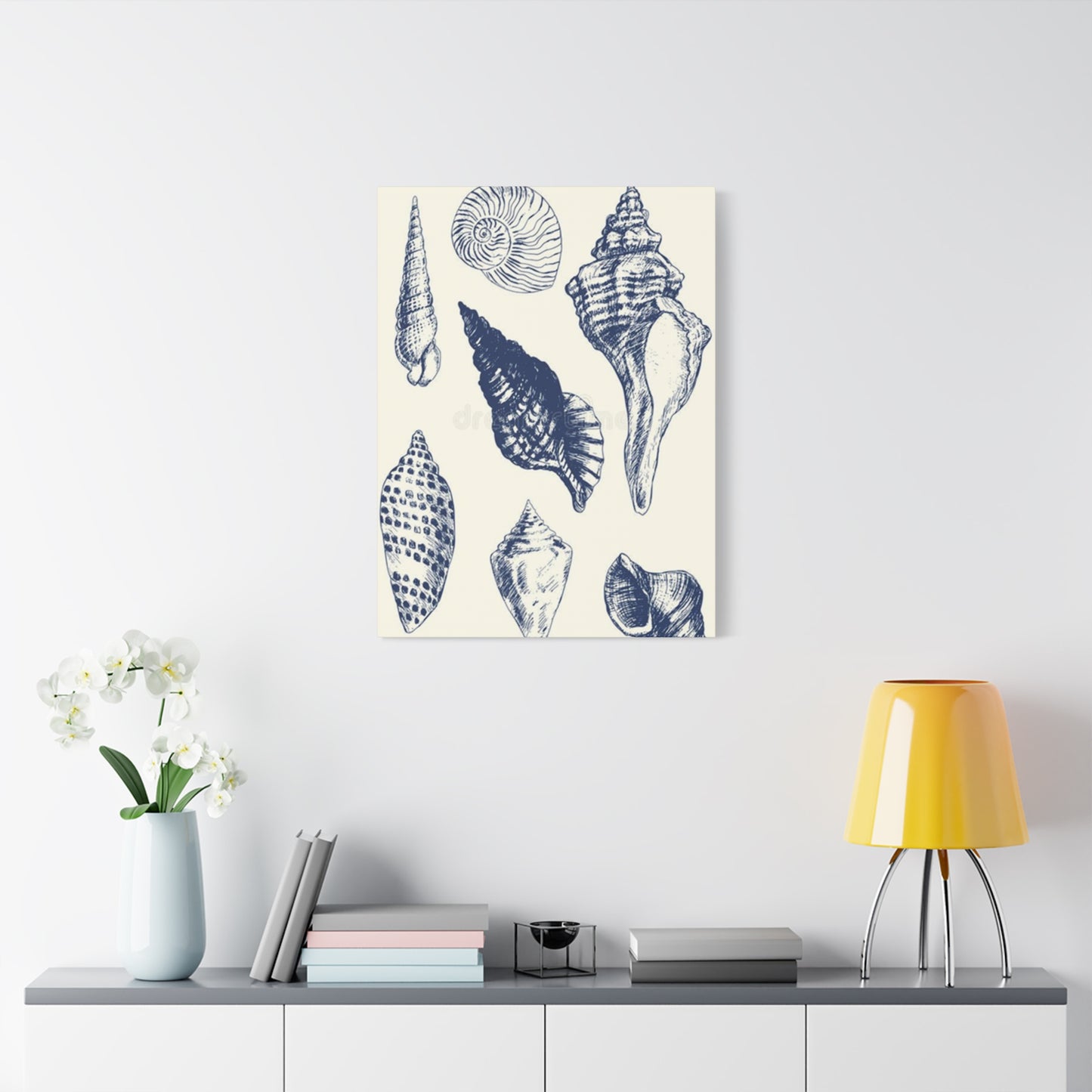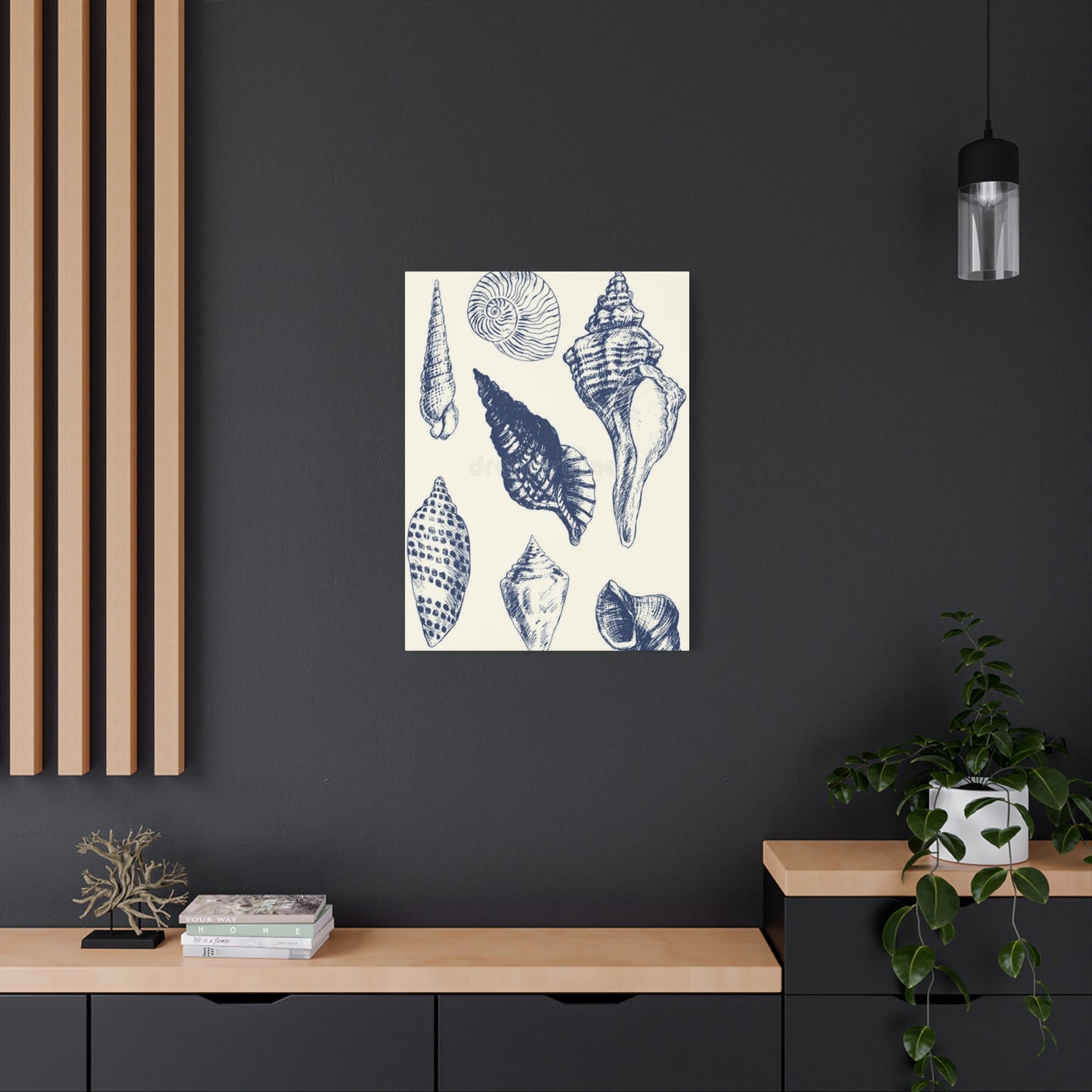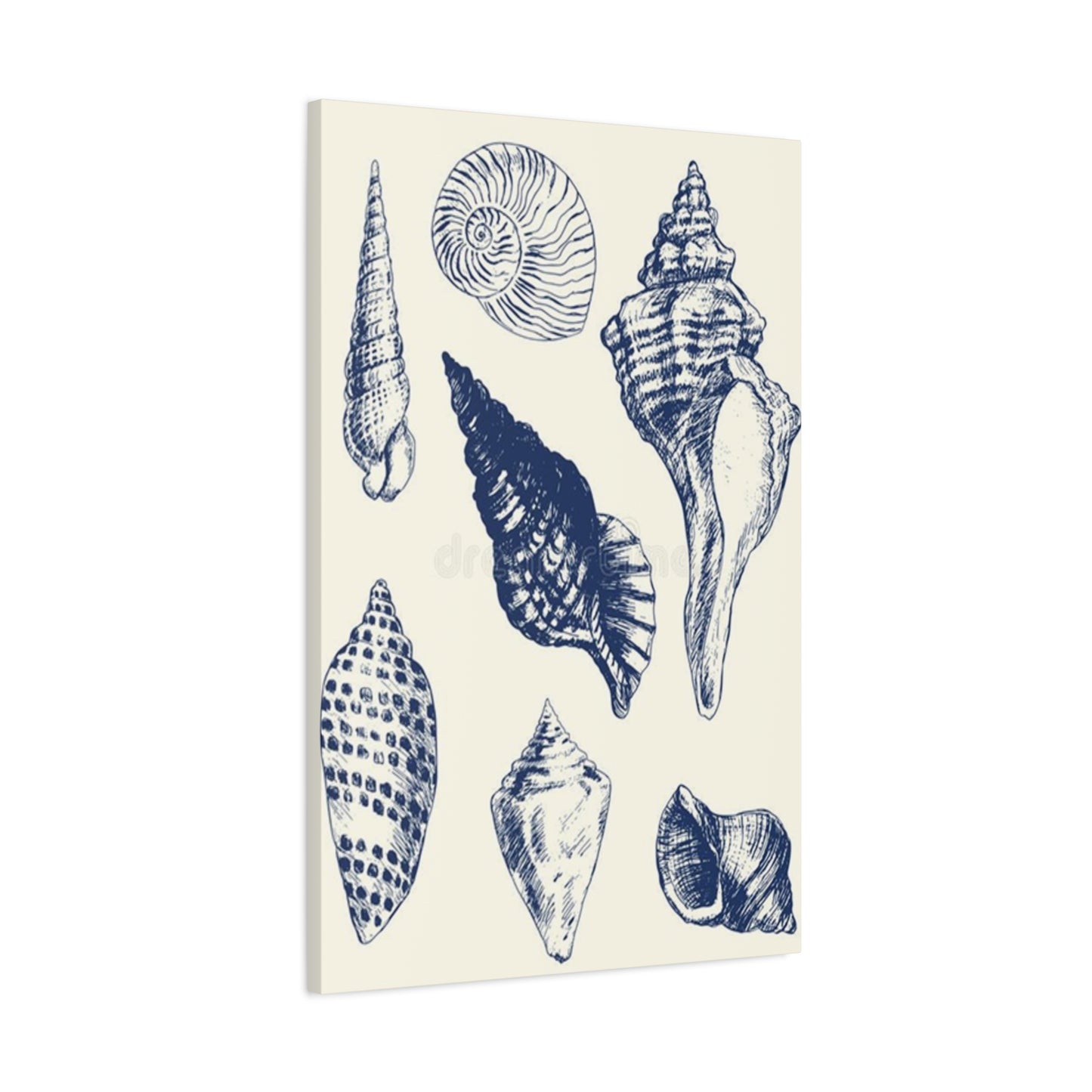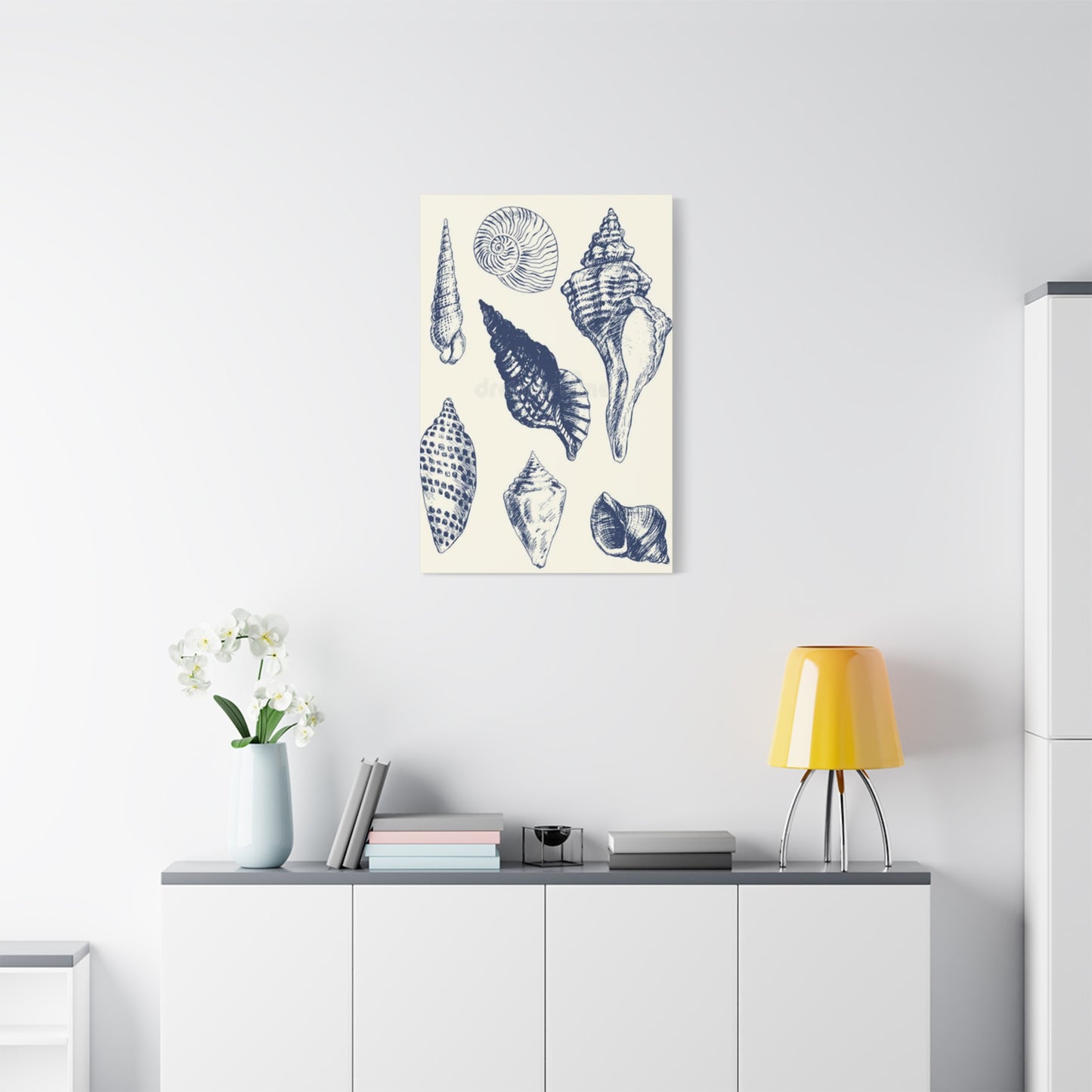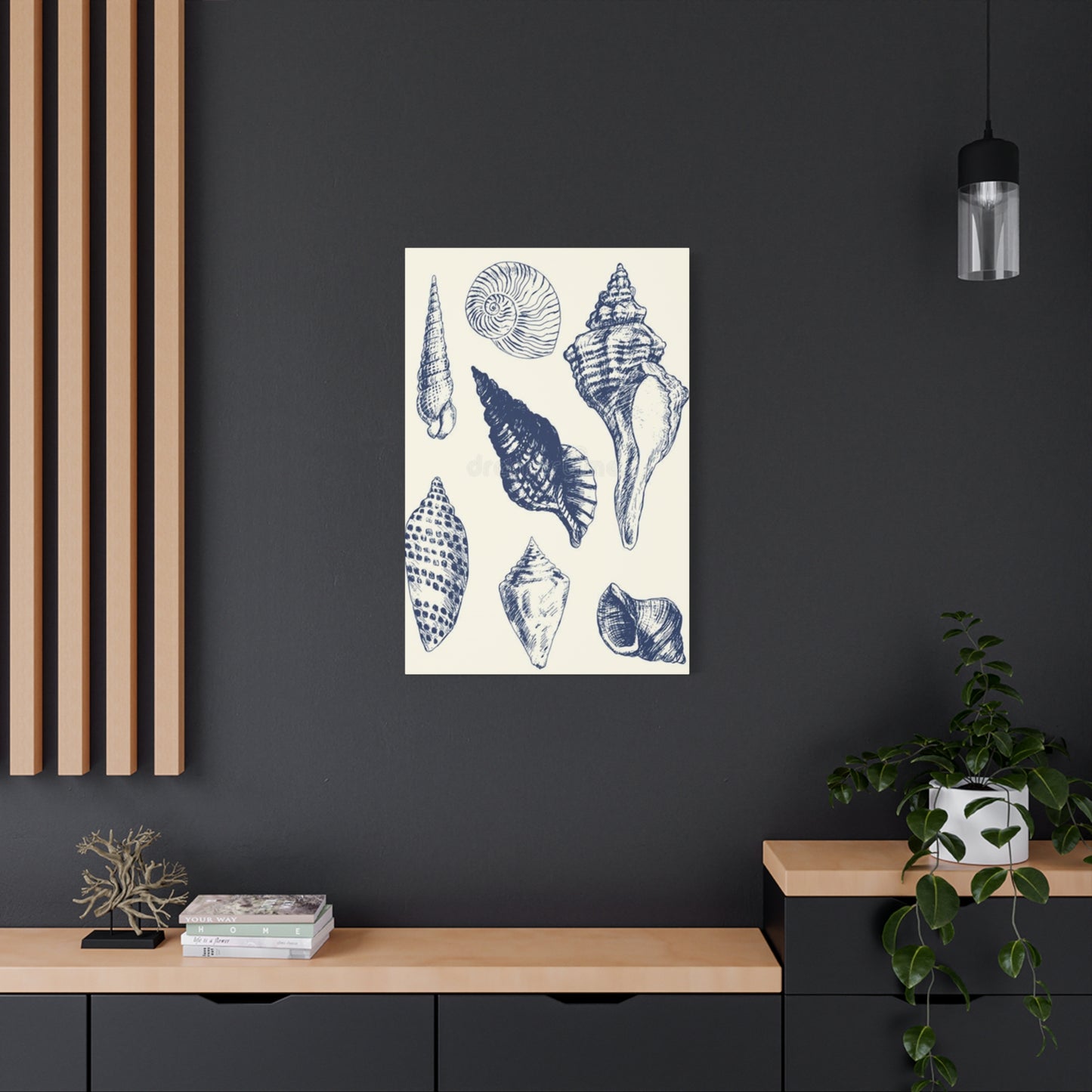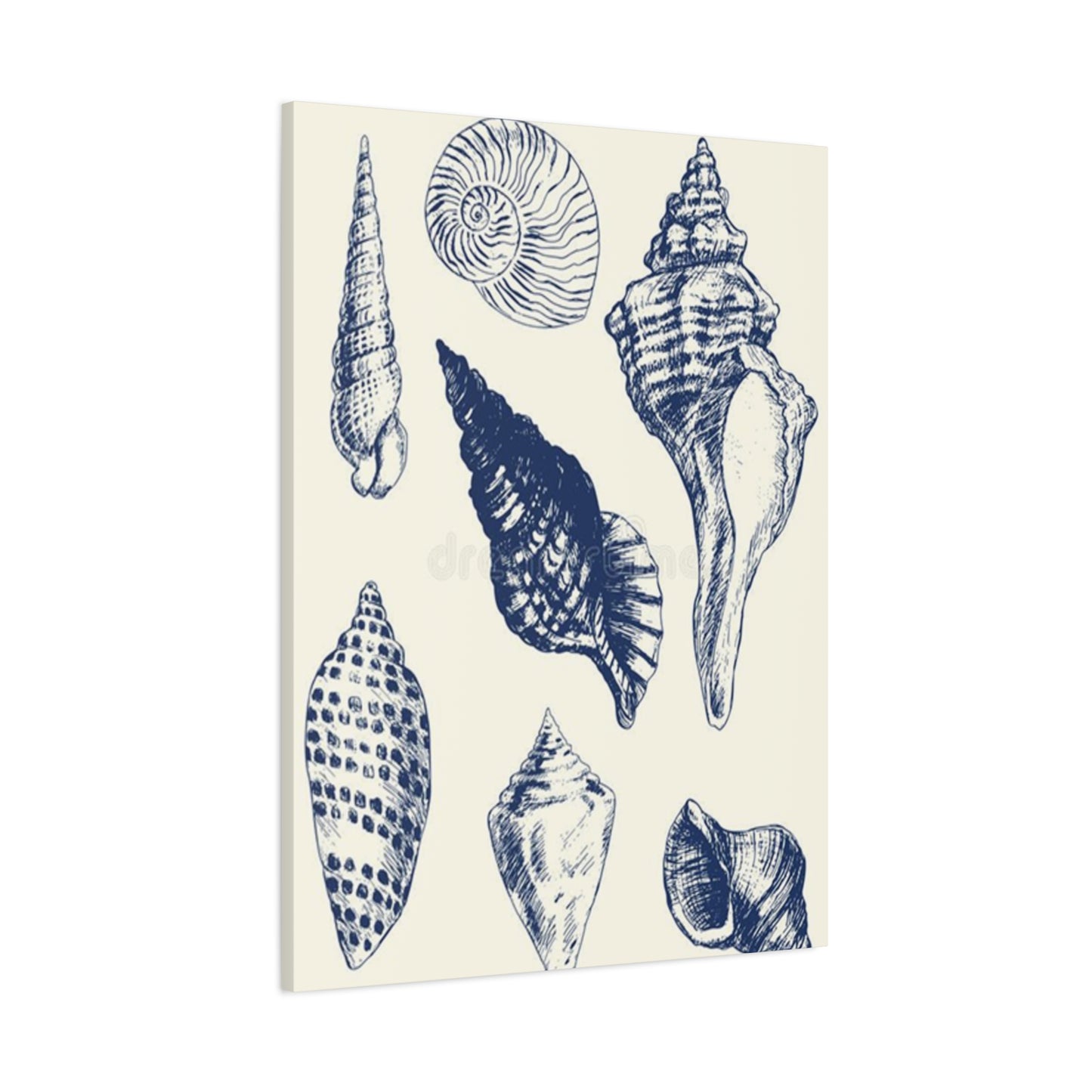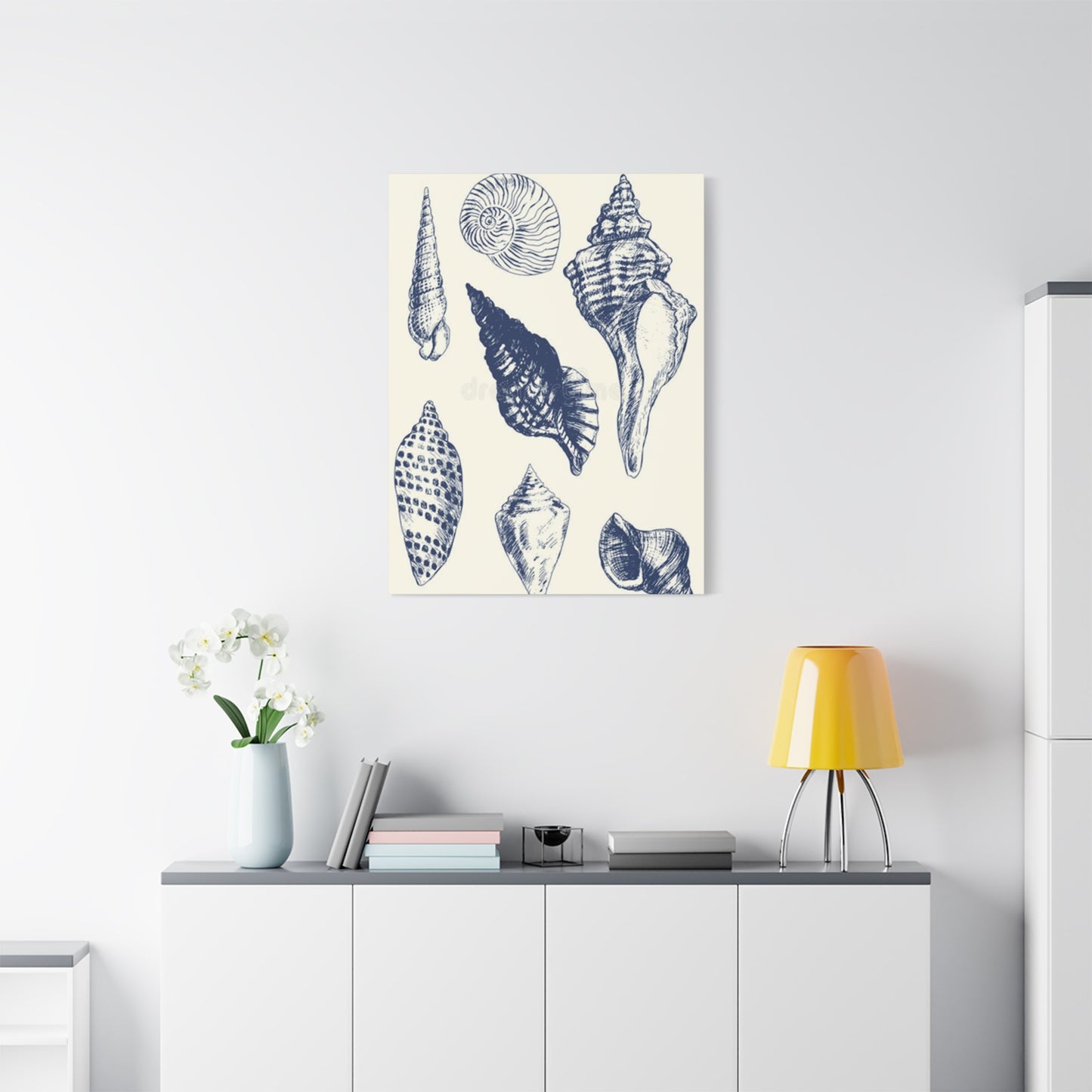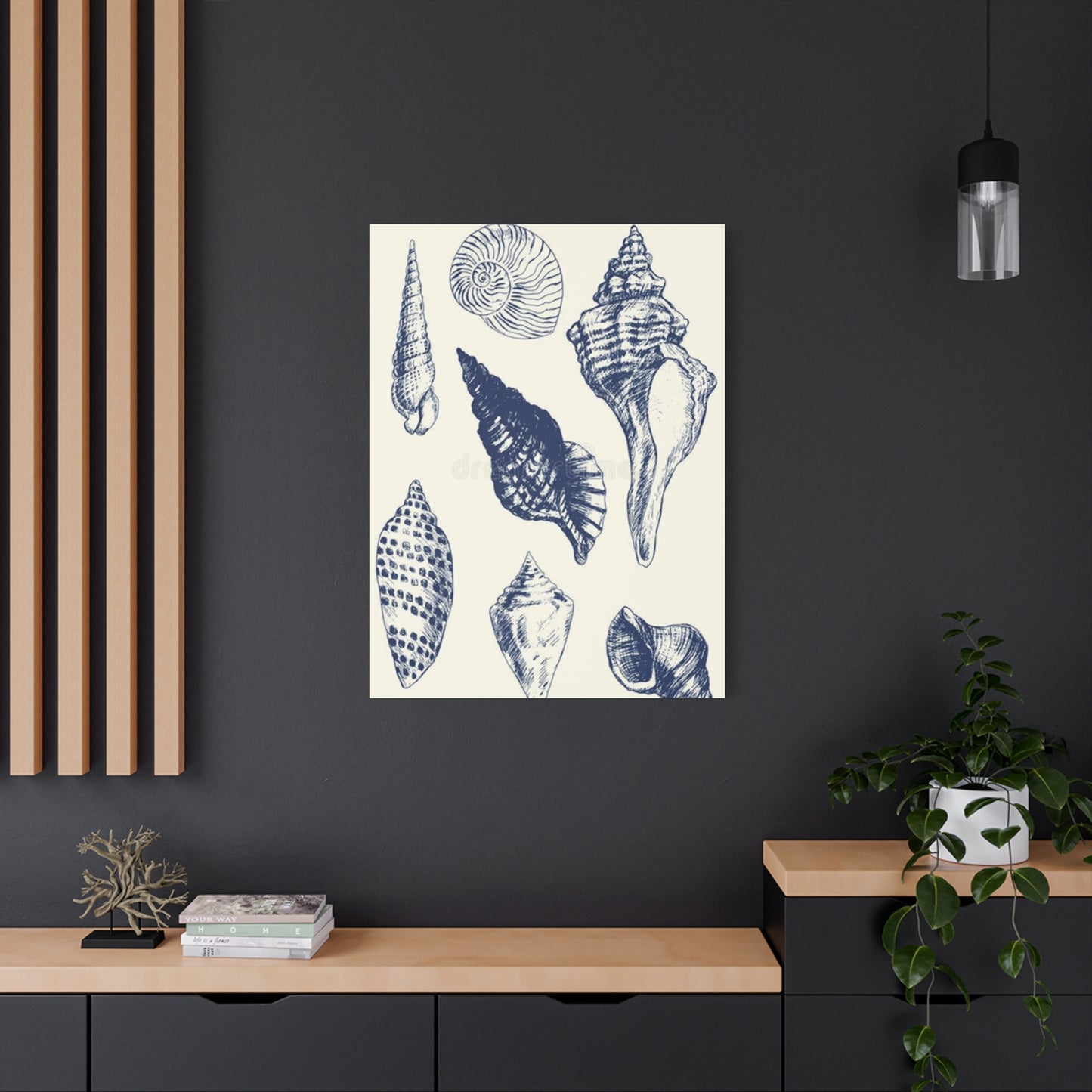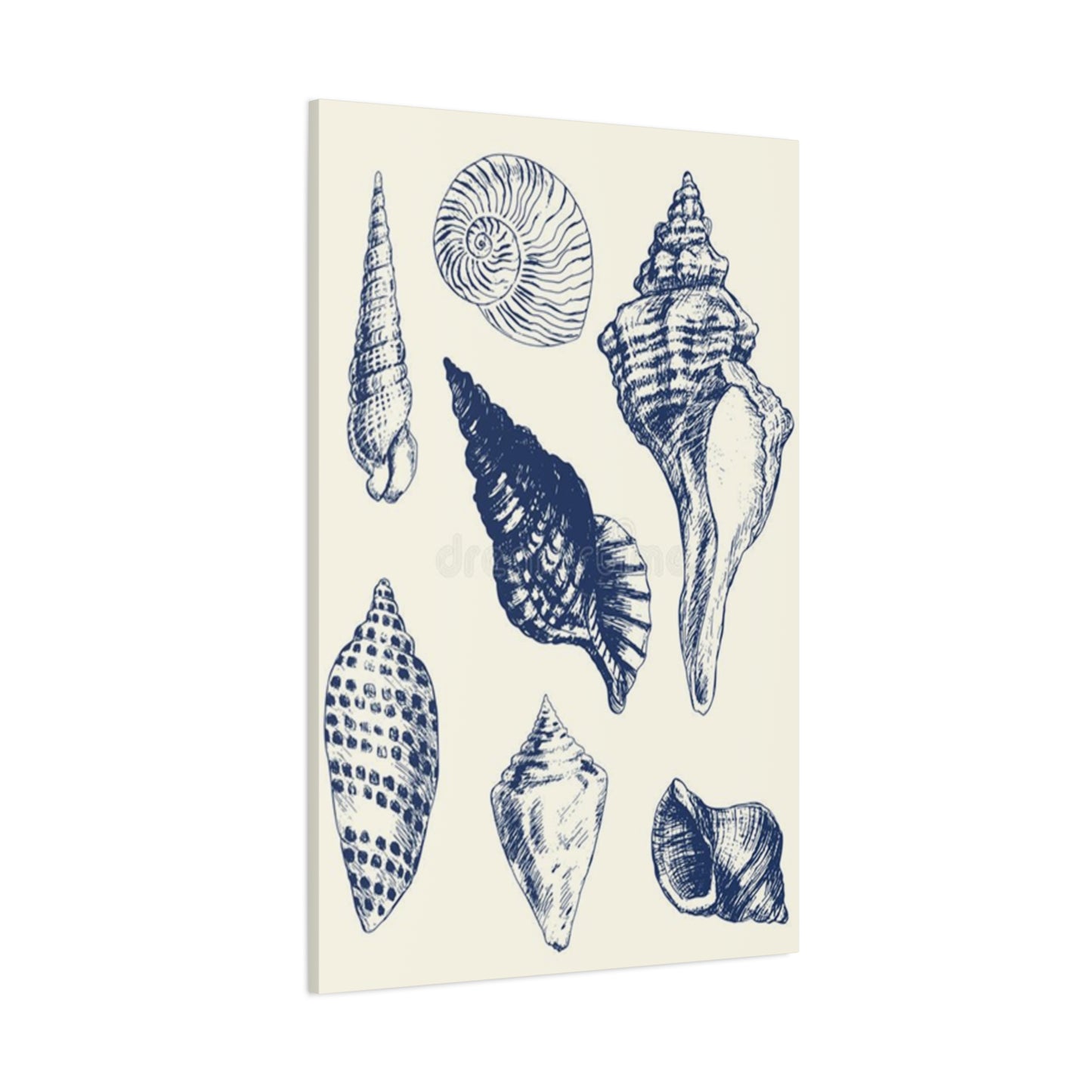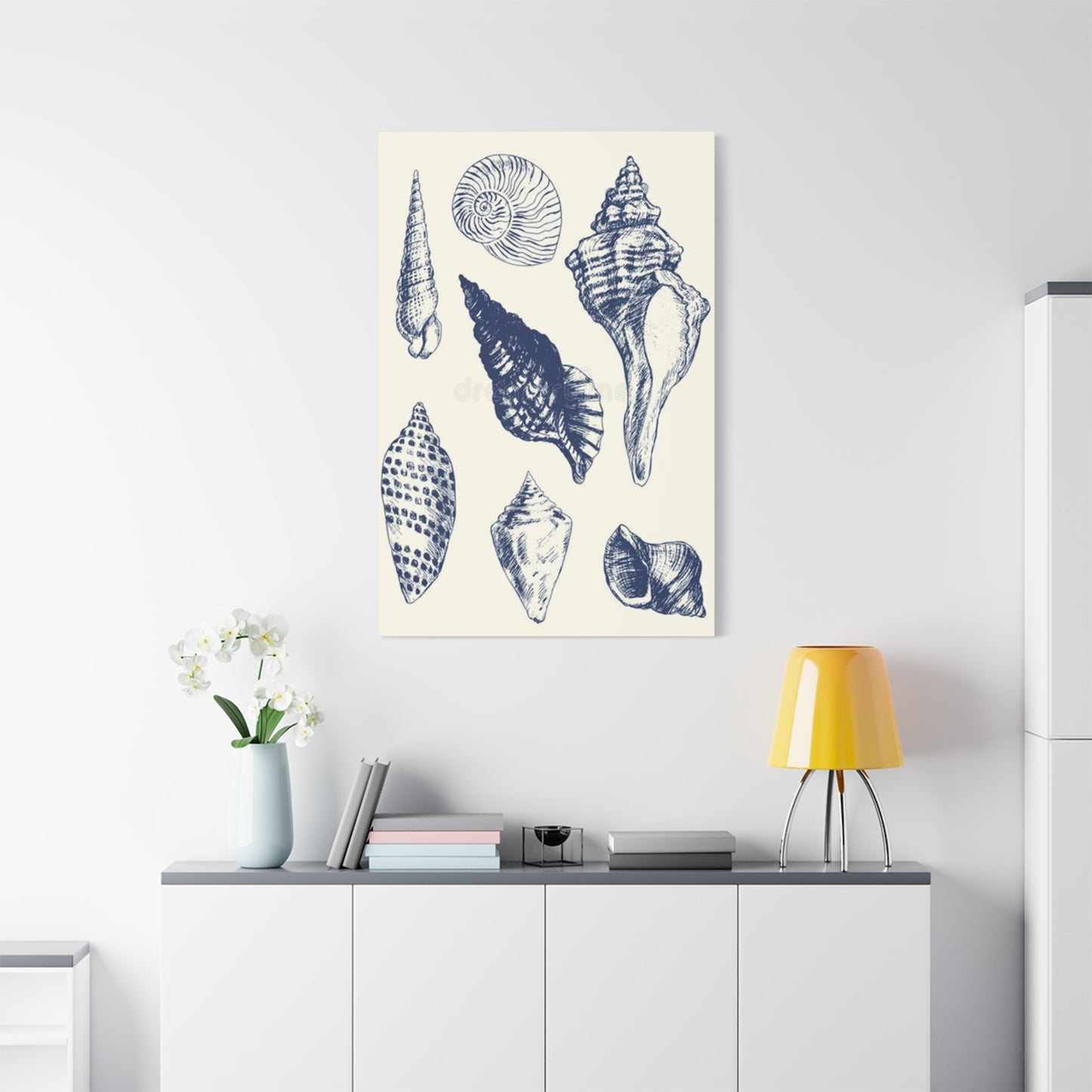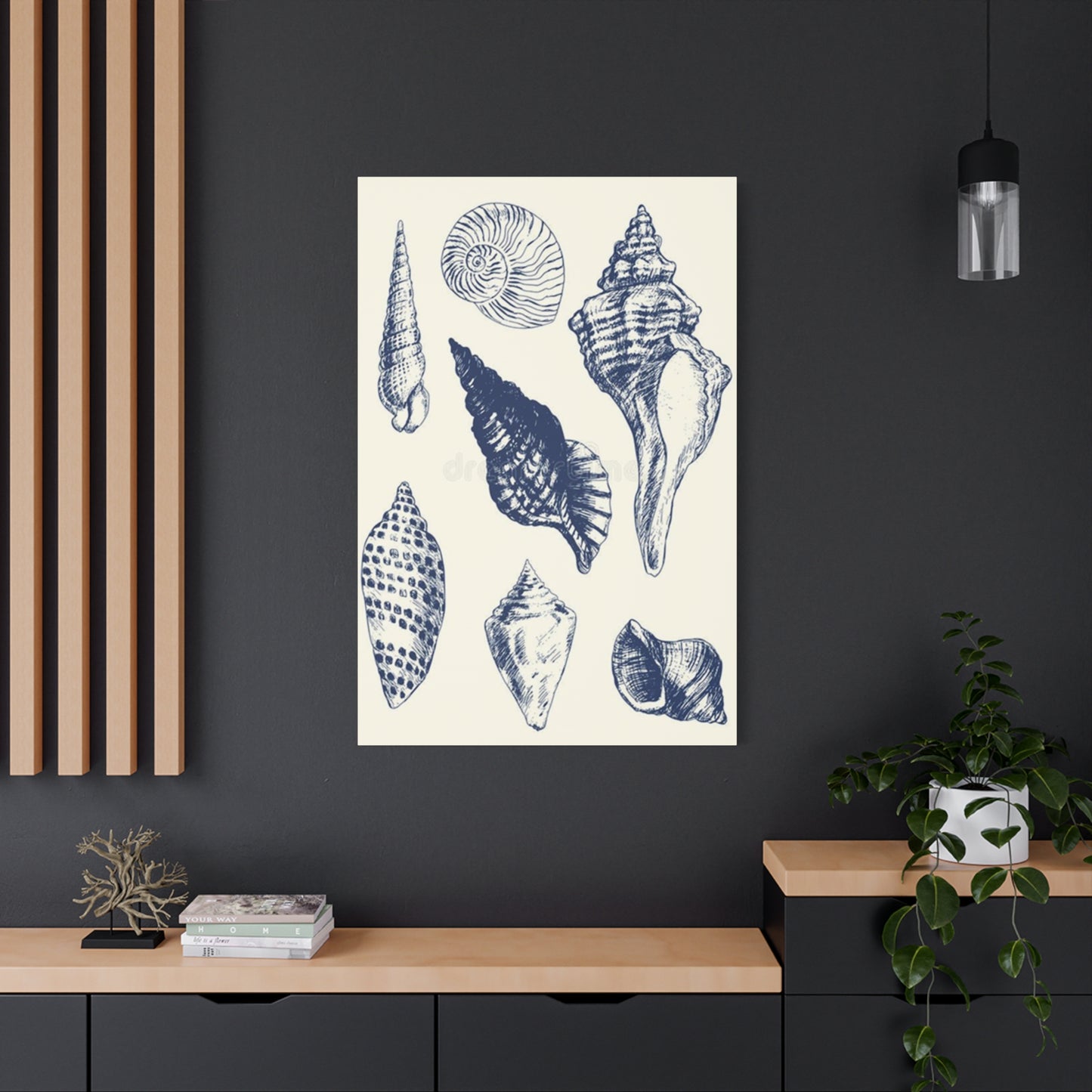Minimalist Meets Nature: Stunning Shell Shapes Drawing Wall Art Ideas
The fascination with ocean-themed artwork has captivated homeowners and interior designers for generations. Shell-inspired artistic creations represent more than mere decorative elements; they embody the tranquil essence of coastal living and bring the soothing atmosphere of the seaside into any living space. These delicate representations of marine life serve as powerful visual anchors that can transform ordinary rooms into serene sanctuaries reminiscent of peaceful shoreline experiences.
The popularity of marine-inspired interior design stems from humanity's innate connection to water and natural environments. Shell artwork specifically appeals to our aesthetic sensibilities through its organic forms, mathematical precision, and symbolic associations with protection, beauty, and transformation. When incorporated thoughtfully into home decor, these pieces create focal points that draw the eye while maintaining a sense of calm sophistication.
Contemporary interior design trends increasingly favor natural motifs that connect indoor spaces with the outdoor world. Shell-inspired artwork perfectly fulfills this desire by introducing organic shapes and patterns that contrast beautifully with modern architectural lines and manufactured materials. The versatility of shell motifs allows them to complement various design styles, from minimalist Scandinavian aesthetics to bohemian coastal themes and traditional nautical decor.
The psychological impact of shell-inspired artwork cannot be understated. Research in environmental psychology suggests that natural imagery, particularly marine themes, can reduce stress levels and promote feelings of tranquility. The curved lines and spiral patterns commonly found in shell designs activate the same neural pathways associated with relaxation and meditation, making them ideal choices for bedrooms, living areas, and personal retreat spaces.
Modern homeowners increasingly seek artwork that serves multiple purposes, functioning as both decorative elements and conversation starters. Shell-inspired pieces fulfill this requirement by offering visual interest while maintaining broad appeal. Unlike more controversial or abstract artistic choices, marine-themed artwork tends to create welcoming environments that feel both sophisticated and accessible to diverse audiences.
The economic advantages of shell-inspired artwork also contribute to its growing popularity. Unlike expensive original paintings or sculptures, quality reproductions and prints of shell designs offer affordable ways to achieve designer aesthetics. This accessibility allows homeowners to experiment with different arrangements and seasonal updates without significant financial investment.
Historical Significance of Shell Motifs in Artistic Expression
Shell motifs have appeared throughout human artistic expression for millennia, representing various cultural meanings and aesthetic values across different civilizations. Ancient cultures from the Mediterranean, Pacific Islands, and coastal regions of Africa and the Americas incorporated shell designs into their pottery, textiles, jewelry, and architectural elements. These early applications established shell imagery as symbols of fertility, protection, prosperity, and spiritual transformation.
During the Renaissance period, European artists began incorporating detailed shell studies into their works as symbols of pilgrimage, particularly the scallop shell associated with the Camino de Santiago. This religious symbolism elevated shell imagery beyond mere decorative elements to represent spiritual journey and divine protection. Artists like Botticelli famously featured shells in masterpieces such as "The Birth of Venus," cementing their place in Western artistic tradition.
The Victorian era witnessed a surge in shell collecting and artistic representation, coinciding with increased leisure time and scientific curiosity about natural history. Shell studies became popular subjects for botanical and zoological illustrations, leading to the development of highly detailed artistic techniques for capturing the subtle textures, colors, and forms of various species. This period established many of the aesthetic conventions still used in contemporary shell artwork.
Art Nouveau movements of the late 19th and early 20th centuries embraced shell motifs as perfect examples of natural design principles. Artists and designers drew inspiration from the mathematical precision found in shell spirals and the organic flow of their surfaces. This movement influenced architecture, decorative arts, and graphic design, establishing shell patterns as sophisticated design elements rather than merely nautical decorations.
Modern artistic movements have reinterpreted shell imagery through various lenses, from abstract expressionism to minimalist line work. Contemporary artists appreciate shells for their geometric properties, exploring concepts of growth, protection, and natural engineering through simplified representations. This evolution has led to the current popularity of minimalist shell line drawings that capture essential forms without excessive detail.
The digital age has democratized access to high-quality shell imagery and artistic techniques. Online platforms and digital tools allow artists to create precise line drawings and share their work globally, leading to the proliferation of shell-inspired artwork available for home decoration. This accessibility has contributed to the current trend of incorporating marine themes into modern interior design.
Psychological Benefits of Marine-Themed Interior Design
The incorporation of marine-themed elements, particularly shell-inspired artwork, into interior spaces provides numerous psychological benefits supported by environmental psychology research. These benefits extend beyond mere aesthetic pleasure to include measurable improvements in mood, stress reduction, and overall well-being. Understanding these psychological impacts helps explain the enduring popularity of coastal-inspired interior design choices.
Biophilic design principles suggest that humans possess an innate affinity for natural elements, including those associated with marine environments. Shell artwork satisfies this biological predisposition by introducing organic forms and patterns that resonate with our evolutionary connection to natural habitats. The presence of these elements in interior spaces can reduce cortisol levels and promote parasympathetic nervous system activation associated with relaxation and restoration.
Color psychology plays a significant role in the effectiveness of shell-inspired artwork. The neutral tones commonly found in shell designs, including creams, whites, soft grays, and muted browns, create calming visual environments that reduce overstimulation and promote mental clarity. These colors work particularly well in spaces designated for rest, reflection, or creative activities, supporting the psychological functions these areas are intended to serve.
The mathematical properties inherent in shell forms contribute to their psychological appeal through their connection to sacred geometry and natural proportions. The golden ratio and logarithmic spirals found in many shell species create visual harmony that the human brain finds inherently pleasing. This mathematical precision subconsciously communicates order and stability, contributing to feelings of security and peace within interior spaces.
Studies in environmental psychology have demonstrated that exposure to marine imagery can lower blood pressure, reduce anxiety levels, and improve cognitive function. Shell artwork provides these benefits by serving as visual reminders of peaceful coastal experiences and natural environments. Even individuals who have limited direct experience with marine environments can benefit from these associations through cultural conditioning and media exposure.
The symbolic associations of shells contribute to their psychological impact through their connection to themes of protection, transformation, and personal growth. In various cultural traditions, shells represent the journey of life, spiritual development, and the protective aspects of home and family. These deeper meanings add layers of psychological comfort and significance to shell-inspired interior design choices.
Attention restoration theory suggests that natural imagery, including shell motifs, can help restore directed attention depleted by daily cognitive demands. Shell artwork provides opportunities for soft fascination, allowing the mind to rest while remaining gently engaged with visually interesting forms. This restoration is particularly valuable in home offices, study areas, and other spaces where mental clarity is important.
Aesthetic Principles of Shell-Inspired Line Art
Shell-inspired line art represents a sophisticated approach to marine-themed interior design that emphasizes form, proportion, and essential characteristics over photographic detail. This artistic style captures the essence of shell structures through carefully considered line weights, spacing, and compositional arrangements that highlight the inherent beauty of these natural forms.
The fundamental principle underlying effective shell line art is the concept of reduction to essential elements. Artists working in this medium must identify the most characteristic features of each shell species and represent them through minimal but expressive lines. This process requires deep understanding of shell anatomy, growth patterns, and structural relationships to create artwork that feels both accurate and artistically compelling.
Line weight variation serves as a crucial tool in shell-inspired artwork for creating hierarchy, depth, and visual interest. Thicker lines typically define major structural elements such as shell edges and prominent ridges, while thinner lines represent surface textures, growth rings, and subtle contours. This variation in line weight creates visual rhythm and prevents the artwork from appearing flat or monotonous.
Compositional principles specific to shell artwork include considerations of orientation, scale relationships, and negative space utilization. Single shell studies benefit from careful positioning within the picture plane to create dynamic tension while maintaining visual balance. Multiple shell compositions require thoughtful arrangement to avoid visual competition while creating harmonious relationships between different forms and sizes.
The treatment of surface patterns and textures in shell line art demands particular sensitivity to avoid overwhelming the overall composition while still conveying the characteristic features of different species. Artists must make strategic decisions about which details to include, emphasize, or eliminate based on the intended scale of the final artwork and its planned use within interior design contexts.
Proportion and scale considerations are especially important when creating shell artwork intended for specific interior design applications. Wall art must be sized appropriately for its intended space, with line weights and detail levels adjusted to remain legible and visually effective at the planned viewing distance. These technical considerations directly impact the aesthetic success of the final installation.
The relationship between positive and negative space in shell line art contributes significantly to its visual impact and psychological effect. Generous negative space around shell forms creates breathing room that enhances the calming qualities associated with marine-themed artwork. This approach also allows individual shell characteristics to read clearly without visual interference from competing elements.
Technical Aspects of Creating Shell Line Drawings
Creating effective shell line drawings requires technical proficiency in several artistic skills combined with careful observation of natural specimens or high-quality reference materials. The technical process begins with thorough study of shell anatomy, including understanding of growth patterns, surface textures, and structural relationships that define each species' distinctive characteristics.
Preliminary sketching forms the foundation of successful shell line art, allowing artists to explore different compositional arrangements and refine their understanding of shell forms before committing to final line work. This exploratory phase should include multiple studies from different angles, examining how shells appear when viewed from various perspectives and how lighting affects the visibility of surface details and structural elements.
Line quality represents one of the most critical technical aspects of shell artwork creation. Consistent, confident lines convey authority and skill while hesitant or shaky lines can undermine the overall effectiveness of the piece. Artists must develop steady hand control and appropriate tool handling techniques to achieve clean, expressive lines that accurately represent shell characteristics.
Tool selection significantly impacts the technical execution and final appearance of shell line drawings. Traditional media options include fine-tip pens, technical drawing instruments, pencils of various hardnesses, and brush pens that allow for variable line weights. Digital tools offer additional possibilities including vector graphics programs that enable precise line control and easy revision of compositional elements.
Scale considerations affect every technical decision in shell artwork creation, from initial sketching to final line weights and detail inclusion. Artwork intended for large wall installations requires different technical approaches than pieces designed for smaller, intimate viewing contexts. Artists must adjust their techniques accordingly to ensure optimal visual impact at the intended scale.
Surface preparation and material selection influence both the creation process and the final appearance of shell line artwork. Paper texture, absorbency, and color affect how drawing media interact with the surface. Smoother papers generally work better for precise line work, while textured surfaces can add visual interest but may interfere with fine detail reproduction.
Quality control throughout the creation process helps ensure consistent technical standards across multiple pieces or within series of related works. This includes regular assessment of line consistency, proportional accuracy, and overall compositional effectiveness. Technical standards should be established early in the creation process and maintained throughout to achieve professional-quality results.
Color Theory in Shell-Inspired Interior Design
Color theory principles play a fundamental role in maximizing the interior design impact of shell-inspired artwork, even when working with predominantly monochromatic line art pieces. Understanding how shell-related colors interact with various interior color schemes enables designers and homeowners to create cohesive, visually pleasing environments that support the calming qualities associated with marine-themed decor.
Natural shell colors provide an extensive palette ranging from pure whites and cream tones through various grays, browns, and muted earth tones. These neutral colors offer exceptional versatility in interior design applications, serving as harmonious complements to both warm and cool color schemes. The subtle variations within shell color ranges allow for sophisticated tonal compositions that add visual interest without overwhelming other design elements.
Monochromatic color schemes based on shell-inspired palettes create serene, sophisticated environments particularly suited to bedrooms, meditation spaces, and areas designated for relaxation. These schemes rely on variations in value and saturation rather than contrasting hues to create visual interest. Shell artwork fits naturally into monochromatic schemes by contributing textural and formal variety while maintaining color harmony.
Complementary color relationships can enhance shell artwork through strategic background color choices or surrounding design elements. Cool blue-gray backgrounds, for instance, create subtle contrast that makes warm cream-colored shell artwork appear more luminous. These complementary relationships should be handled with restraint to maintain the calming qualities associated with marine-themed interior design.
Analogous color schemes incorporating colors adjacent to shell tones on the color wheel create harmonious, naturally flowing interior environments. These might include combinations of cream, soft yellow, and pale orange, or arrangements featuring various gray tones with subtle blue or green undertones. Shell artwork serves as an anchoring element within these schemes, providing visual stability and natural reference points.
The psychological impact of color choices in shell-inspired interior design extends beyond mere aesthetic considerations to influence mood, energy levels, and cognitive function. Cooler shell tones tend to promote relaxation and contemplation, while warmer variations can create more energizing environments. Understanding these psychological associations helps in selecting appropriate shell artwork for specific interior design objectives.
Seasonal color adaptations allow shell-inspired interior design to remain fresh and engaging throughout the year. While the artwork itself may remain constant, surrounding colors, textiles, and accessories can be adjusted to reflect seasonal preferences while maintaining the cohesive shell-based color foundation. This approach provides design flexibility while preserving the investment in quality shell artwork.
Placement Strategies for Maximum Visual Impact
Strategic placement of shell-inspired artwork maximizes its visual impact while supporting the overall interior design objectives of creating calm, harmonious living spaces. Proper placement considers viewing angles, lighting conditions, scale relationships, and functional requirements of different interior spaces to achieve optimal aesthetic and psychological effects.
Wall placement at eye level represents the fundamental principle for most shell artwork installations, ensuring comfortable viewing without strain while creating appropriate visual relationships with furniture and other design elements. However, this standard guideline requires adjustment based on the specific context of each room and the intended use patterns of the space.
Lighting considerations significantly affect the visual impact of shell line art, particularly pieces that rely on subtle line weight variations and detailed surface representations. Natural lighting from windows can create dynamic shadows and highlights that enhance the three-dimensional qualities of shell forms, while artificial lighting should be positioned to avoid glare on framed pieces while providing adequate illumination for comfortable viewing.
Grouping strategies for multiple shell pieces require careful attention to visual balance, thematic coherence, and spatial relationships. Gallery wall arrangements can effectively display collections of shell artwork, but require thoughtful planning to avoid visual chaos. Consistent framing, appropriate spacing, and logical arrangement patterns help create cohesive presentations that enhance rather than compete with individual pieces.
Scale relationships between shell artwork and surrounding architectural elements influence the perceived impact and appropriateness of the installation. Large pieces can serve as focal points in spacious rooms, while smaller works may be more suitable for intimate spaces or secondary wall areas. The principle of proportion should guide these decisions to maintain visual harmony.
Focal point creation through strategic shell artwork placement can enhance the overall design impact of interior spaces. Positioning significant pieces across from main entrances or at the terminus of sight lines creates natural visual destinations that draw attention and create memorable impressions. These focal points should be balanced with supporting elements to avoid overwhelming the space.
Room-specific placement strategies recognize that different interior spaces have unique functional requirements and viewing patterns that affect optimal artwork positioning. Living rooms may benefit from larger pieces positioned for comfortable viewing from seating areas, while bedrooms might be better served by smaller, more intimate pieces positioned for viewing from the bed or dressing area.
Framing and Presentation Techniques
Professional framing and presentation techniques significantly enhance the visual impact and longevity of shell-inspired artwork while contributing to the overall aesthetic success of interior design installations. Proper framing serves both protective and aesthetic functions, creating appropriate visual boundaries while complementing the artwork's style and the surrounding interior design context.
Frame selection for shell artwork requires consideration of the piece's style, scale, and intended interior design context. Simple, clean frames generally work best with minimalist shell line art, avoiding visual competition with the artwork itself. Natural materials such as wood frames in light finishes or metal frames in neutral tones often complement the organic nature of shell motifs while maintaining contemporary aesthetic appeal.
Matting decisions affect both the visual presentation and conservation of shell artwork. Quality matting creates visual breathing space around the artwork while protecting it from direct contact with glazing materials. Mat colors should generally remain neutral to avoid competing with the artwork, with white, cream, or light gray being safe choices that enhance rather than detract from shell imagery.
Glazing options for shell artwork include regular glass, UV-protective glass, and acrylic alternatives that offer different benefits in terms of protection, weight, and cost. UV protection is particularly important for artworks displayed in areas receiving significant natural light, as it helps prevent fading and deterioration over time. Anti-reflective coatings can improve viewing comfort by reducing glare.
Multiple artwork presentation requires additional consideration of spacing, alignment, and visual flow between pieces. Consistent framing across series of shell artworks creates cohesive presentations, while careful spacing prevents visual crowding and allows each piece to be appreciated individually. Professional installation tools and techniques ensure proper alignment and secure mounting.
Alternative presentation methods for shell artwork include mounting systems that allow for easy rearrangement, floating frames that create contemporary display effects, and digital display options for those preferring technological solutions. Each presentation method offers different aesthetic qualities and practical advantages that should be evaluated based on specific interior design objectives and practical requirements.
Conservation considerations in framing and presentation help ensure the longevity of shell artwork investments. Proper mounting techniques, archival materials, and environmental protection contribute to preserving artwork quality over time. These conservation practices are particularly important for original artwork or limited edition prints that represent significant aesthetic and financial investments.
Room-Specific Applications and Design Considerations
Different interior spaces present unique opportunities and challenges for incorporating shell-inspired artwork effectively. Understanding room-specific requirements, function patterns, and aesthetic objectives enables more successful integration of marine-themed elements into diverse residential and commercial environments.
Living room applications for shell artwork often focus on creating welcoming, conversation-friendly environments that reflect the homeowners' aesthetic preferences while remaining broadly appealing to guests. Large-scale shell studies or collections can serve as focal points above seating areas or fireplace mantels, contributing to the room's overall ambiance while providing visual interest for both residents and visitors.
Bedroom installations benefit from shell artwork's inherently calming qualities, supporting the room's primary function of providing rest and restoration. Smaller, more intimate pieces positioned for viewing from the bed can create personal sanctuaries, while larger works on feature walls can establish the room's overall aesthetic tone. The neutral colors typically found in shell artwork complement most bedroom color schemes without creating overstimulation.
Bathroom spaces present ideal opportunities for shell-inspired artwork due to their natural association with water and cleansing rituals. However, these spaces also present conservation challenges due to humidity and temperature fluctuations. Appropriate framing and glazing become particularly important in bathroom installations to protect artwork from moisture damage while maintaining visual appeal.
Kitchen and dining areas can incorporate shell artwork to create coastal-inspired environments that enhance the enjoyment of meals and food preparation. These spaces often benefit from smaller pieces or collections that provide visual interest without overwhelming the functional requirements of food service and preparation. Easy maintenance and cleaning access should be considered in these installation locations.
Home office applications for shell artwork leverage its stress-reducing qualities to create more comfortable and productive work environments. Strategic placement within the visual field of computer workstations can provide opportunities for attention restoration during demanding cognitive tasks. The mathematical precision of shell forms may also subconsciously support analytical thinking and problem-solving activities.
Hallway and transitional space installations allow shell artwork to contribute to the overall flow and continuity of interior design themes throughout the home. These installations often work best with series of related pieces that create visual progression and movement through the space while maintaining thematic coherence with adjoining rooms.
Scale and Proportion in Shell Art Selection
Proper scale and proportion relationships represent critical factors in the successful integration of shell-inspired artwork into interior design schemes. Understanding these relationships ensures that artwork enhances rather than overwhelms interior spaces while creating appropriate visual hierarchy and balance within the overall design composition.
Wall-to-artwork proportion guidelines suggest that artwork should generally occupy between one-half to three-quarters of the available wall width to create visually satisfying relationships with surrounding architectural elements. However, these guidelines require adjustment based on ceiling height, furniture placement, and other design elements that affect the visual balance of the space.
Furniture relationship considerations ensure that shell artwork complements rather than competes with seating, storage, and other functional elements within the room. Artwork positioned above sofas should typically span about two-thirds of the furniture width to create harmonious proportions. Similar relationships apply to placement above beds, dining tables, and other major furniture pieces.
Ceiling height influences optimal artwork scale selection, with higher ceilings generally accommodating larger pieces more effectively than standard height rooms. In spaces with exceptional ceiling height, multiple pieces or series installations may be more appropriate than single large works to maintain human scale relationships and prevent artwork from appearing lost or insignificant.
Viewing distance factors affect both the optimal size selection and the appropriate level of detail in shell artwork. Pieces intended for close viewing can include finer line work and more subtle details, while artwork positioned for distance viewing requires bolder lines and simpler compositions to remain visually effective. These considerations are particularly important in planning installations for specific furniture arrangements.
Room function influences scale selection through its impact on typical occupancy patterns and viewing behaviors. Formal living rooms may accommodate larger, more dramatic shell artwork installations, while intimate spaces like reading nooks benefit from smaller, more personal-scale pieces that support their intended functions without creating visual distraction.
Multiple piece arrangements require careful consideration of individual artwork sizes and their relationships to each other and to the overall installation area. Gallery wall arrangements benefit from varying sizes that create visual interest while maintaining overall balance. Grid arrangements typically work better with uniform sizes that create orderly, calming presentations.
Contemporary Trends in Marine-Themed Interior Design
Current trends in marine-themed interior design reflect broader cultural movements toward sustainability, mindfulness, and connection with natural environments. Shell-inspired artwork participates in these trends by offering environmentally conscious decorating options that promote well-being while maintaining sophisticated aesthetic appeal.
Minimalist interpretations of marine themes have gained particular popularity as homeowners seek to reduce visual clutter while maintaining connection to natural elements. Shell line art perfectly embodies this trend by capturing essential natural forms through simplified representations that provide visual interest without overwhelming contemporary interior spaces.
Sustainable design practices increasingly influence marine-themed interior design choices, with consumers seeking artwork created through environmentally responsible methods and materials. Digital printing technologies enable the production of high-quality shell artwork reproductions without the environmental impact associated with traditional printing methods, while supporting artists through accessible distribution channels.
Biophilic design integration represents a major trend affecting the incorporation of shell artwork and other natural elements into interior spaces. This approach recognizes the human need for connection with natural environments and incorporates these elements strategically to support physical and psychological well-being. Shell artwork serves multiple functions within biophilic design strategies.
Customization and personalization trends encourage homeowners to seek unique shell artwork pieces that reflect individual experiences and preferences rather than mass-produced decorative items. This trend supports independent artists and allows for more meaningful connections between residents and their interior design choices while maintaining the broader appeal of marine-themed aesthetics.
Technological integration in marine-themed design includes digital display options, interactive elements, and smart home integration that enhances the functionality and appeal of shell-inspired interior design elements. While traditional artwork remains popular, technological options provide additional flexibility and customization possibilities for tech-savvy consumers.
Multi-functional design elements that combine aesthetic appeal with practical functionality represent another significant trend affecting shell-inspired interior design. This might include shell-motif room dividers, functional art pieces, or integrated storage solutions that incorporate marine themes while serving practical needs within contemporary living environments.
Cultural Significance of Shell Imagery Across Different Societies
Shell imagery carries profound cultural significance across diverse societies worldwide, with interpretations ranging from spiritual symbolism to practical applications in art, decoration, and ceremonial contexts. Understanding these cultural dimensions adds depth and meaning to contemporary shell-inspired interior design choices while connecting modern homes with ancient traditions and beliefs.
Pacific Island cultures have maintained strong connections to shell imagery through their maritime heritage and traditional craftsmanship practices. Shells serve as important cultural symbols representing prosperity, protection, and connection to ancestral spirits. Traditional shell work includes intricate jewelry, ceremonial objects, and architectural decorations that continue to influence contemporary Pacific Island aesthetic sensibilities.
Mediterranean cultures have incorporated shell motifs into artistic traditions since ancient times, with particular emphasis on the scallop shell's association with pilgrimage and spiritual journey. These cultural associations infuse shell-inspired interior design with deeper meaning related to personal growth, transformation, and spiritual seeking that resonates with contemporary wellness and mindfulness movements.
Native American traditions across coastal regions have utilized shells for both practical and ceremonial purposes, developing sophisticated understanding of shell properties and symbolic meanings. These traditions view shells as connecting elements between land and sea, representing balance, protection, and the cyclical nature of life. Contemporary interpretations of these themes appear in modern shell artwork and interior design applications.
Asian cultures, particularly those in coastal regions of Japan, China, and Southeast Asia, have developed distinctive approaches to shell imagery that emphasize harmony, balance, and natural beauty. Japanese aesthetics particularly value the subtle variations in shell forms and colors, incorporating these elements into traditional and contemporary design practices that influence modern minimalist approaches to shell-inspired interior design.
European artistic traditions have elevated shell imagery through detailed scientific illustration, decorative arts, and architectural ornamentation. The Victorian era's fascination with natural history collecting established many conventions for shell representation that continue to influence contemporary artwork creation and appreciation. These historical precedents provide rich sources of inspiration for modern shell-inspired interior design.
African coastal cultures have developed unique approaches to shell utilization that combine practical applications with spiritual significance. Traditional uses include currency, ceremonial objects, and decorative elements that reflect sophisticated understanding of shell properties and cultural values. Contemporary African artists continue to innovate within these traditional frameworks while addressing modern aesthetic and cultural concerns.
Scientific Accuracy in Artistic Shell Representations
Scientific accuracy in shell artwork representations enhances the educational value and authentic appeal of marine-themed interior design while supporting broader cultural appreciation for natural diversity and biological complexity. Understanding the scientific aspects of shell formation, growth patterns, and species characteristics enables artists and designers to create more compelling and meaningful work.
Shell anatomy knowledge provides the foundation for accurate artistic representation, including understanding of fundamental structures such as apertures, spires, whorls, and surface features that distinguish different species and families. This anatomical understanding enables artists to capture essential characteristics that make shell artwork recognizable and scientifically credible while maintaining artistic interpretation flexibility.
Growth pattern recognition helps artists accurately represent the natural development processes that create distinctive shell forms and surface textures. Understanding how shells grow through incremental additions of calcium carbonate allows for more authentic representation of growth lines, color variations, and proportional relationships that characterize different species at various life stages.
Species-specific characteristics require careful observation and research to ensure accurate representation in artwork intended for scientific illustration or educational purposes. However, artistic interpretation allows for stylization and simplification that captures essential species characteristics without requiring photographic accuracy. This balance between scientific accuracy and artistic expression creates more engaging and accessible shell artwork.
Proportional accuracy in shell artwork ensures that pieces maintain believable relationships between different structural elements even when stylized or simplified for artistic effect. Understanding the mathematical relationships inherent in shell growth patterns, such as logarithmic spirals and golden ratio proportions, helps artists create visually satisfying work that resonates with natural harmony.
Habitat and ecological context awareness can inform artistic choices regarding shell positioning, grouping, and environmental relationships portrayed in artwork. Understanding where different shell species naturally occur and their ecological roles can inspire more authentic and meaningful artistic compositions that reflect natural relationships and environmental contexts.
Conservation awareness in shell artwork creation and appreciation can support broader environmental education and stewardship goals. Artists and consumers who understand the challenges facing marine ecosystems can make more informed choices about artwork creation, sourcing, and display while supporting conservation-minded artists and organizations.
Digital vs. Traditional Creation Methods
The choice between digital and traditional creation methods for shell-inspired artwork significantly affects both the artistic process and the final aesthetic qualities of the work. Understanding the advantages and limitations of each approach enables artists and consumers to make informed decisions based on their specific objectives, technical capabilities, and aesthetic preferences.
Traditional drawing methods using pens, pencils, and paper offer direct tactile engagement with the artistic process that many artists find essential to their creative development and expression. These methods allow for spontaneous discoveries, happy accidents, and organic development of ideas that can be difficult to replicate in digital environments. Traditional tools also provide immediate feedback and natural resistance that helps develop drawing skills and artistic sensitivity.
Digital creation tools offer precision, flexibility, and efficiency advantages that make them particularly attractive for commercial artwork production and reproduction. Vector graphics programs enable artists to create infinitely scalable artwork that maintains sharp line quality at any size, while layer-based editing capabilities allow for extensive revision and experimentation without starting over completely.
Cost considerations differ significantly between traditional and digital approaches, with traditional methods requiring ongoing material purchases while digital methods involve higher initial equipment costs but lower ongoing expenses. For artists producing large quantities of shell artwork or working on commercial projects, digital methods may offer better long-term economic efficiency.
Quality differences between traditional and digital shell artwork often relate to the intended use and reproduction requirements rather than inherent superiority of either method. Traditional artwork can offer unique qualities and textures that are difficult to replicate digitally, while digital work provides consistency and reproduction flexibility that traditional methods cannot match.
Workflow efficiency varies depending on the artist's technical proficiency and the specific requirements of each project. Some artists work more efficiently in traditional media due to their established skills and preferences, while others find digital tools enable faster iteration and refinement. The optimal choice depends on individual circumstances and project requirements.
Reproduction and distribution considerations often favor digital creation methods for their compatibility with modern printing and online distribution systems. Digital artwork can be easily scaled, color-adjusted, and formatted for various applications without quality loss, while traditional artwork requires high-quality scanning or photography for reproduction purposes.
Market Trends and Consumer Preferences
Understanding current market trends and consumer preferences in shell-inspired artwork helps artists, designers, and retailers make informed decisions about creation, curation, and marketing strategies. These trends reflect broader cultural movements while indicating specific opportunities and challenges within the marine-themed interior design market.
Price point analysis reveals that consumers across different economic segments seek shell-inspired artwork options, from affordable prints and reproductions to original artwork and limited editions. This diversity creates opportunities for artists and retailers to serve multiple market segments while maintaining appropriate quality standards for each price category.
Style preferences currently favor minimalist line work and simplified representations over highly detailed or photorealistic approaches. This trend aligns with broader interior design movements toward clean, uncluttered aesthetics that emphasize essential forms and reduce visual complexity. Artists responding to this trend focus on capturing the essence of shell forms through confident, economical line work.
Size preferences vary according to interior design applications, with medium-sized pieces suitable for most residential applications showing strong market demand. Very large statement pieces and smaller accent works also maintain market niches, but the middle size range offers the greatest versatility and broad market appeal.
Color preferences in shell artwork reflect broader interior design trends toward neutral palettes with subtle variations and natural tones. While colorful shell artwork maintains market presence, monochromatic and near-monochromatic pieces show stronger sales performance and broader applicability across different interior design schemes.
Online vs. traditional retail channels show different consumer behavior patterns, with online buyers often seeking convenience, variety, and competitive pricing, while traditional retail customers value personal service, physical examination of artwork, and immediate gratification. Successful artists and retailers often employ multi-channel strategies to serve both market segments effectively.
Seasonal variations in shell artwork demand typically peak during spring and summer months when consumers undertake home improvement projects and prepare for seasonal entertaining. However, the year-round appeal of shell motifs provides more stable demand patterns than some other seasonal or trend-driven artwork categories.
Seasonal and Thematic Variations
Shell-inspired artwork can be adapted to reflect seasonal changes and special occasions while maintaining its core appeal and design integrity. These variations provide opportunities for dynamic interior design updates without requiring complete redecorating, while supporting the commercial viability of shell-themed artwork through expanded market applications.
Spring interpretations of shell artwork often emphasize renewal, growth, and fresh beginnings through lighter color palettes and compositions that suggest emergence and transformation. Artists might incorporate subtle green undertones or pair shell imagery with botanical elements that reflect the season's natural renewal cycles.
Summer variations capitalize on the natural association between shells and beach activities, vacation experiences, and outdoor living. These interpretations often feature brighter, more vibrant presentations while maintaining the essential calming qualities that make shell artwork appealing for home interior applications. Groupings and series that suggest beach collecting experiences prove particularly popular during summer months.
Autumn adaptations might incorporate warmer color temperatures and compositions that reflect the season's themes of harvest, gratitude, and preparation for winter. Shell artwork can be paired with warmer frame colors, richer mat selections, or groupings that create more intimate, cozy environments suitable for the season's indoor focus.
Winter presentations of shell artwork provide opportunities to create serene, contemplative environments that support the season's natural tendency toward introspection and rest. Cooler color palettes, simpler compositions, and emphasis on the protective aspects of shell imagery align with winter's themes of shelter and conservation.
Holiday applications allow shell artwork to participate in seasonal celebrations while maintaining year-round appropriateness. Subtle styling adjustments through framing, grouping, or supplementary decorative elements can create holiday-appropriate presentations without compromising the artwork's fundamental aesthetic qualities.
Thematic variations beyond seasonal applications might address special interests, cultural celebrations, or personal milestones that add meaning and relevance to shell artwork selections. These applications require sensitivity to avoid overwhelming the essential qualities that make shell imagery appealing while creating meaningful connections for specific audiences or occasions.
Conclusion:
Stunning shell shapes drawing wall art beautifully merges minimalist design with the organic elegance of nature, offering a fresh and sophisticated way to enhance any space. The clean lines and simple forms characteristic of minimalist art allow the natural beauty and intricate patterns of shells to take center stage, creating a serene and visually captivating focal point. This fusion invites a sense of calm and balance, perfectly suited for contemporary interiors seeking subtle yet meaningful decoration.
By incorporating shell-inspired drawings, you bring the soothing essence of the ocean and its timeless rhythms indoors. These artworks evoke feelings of tranquility, renewal, and connection to nature, enriching your environment with both aesthetic appeal and symbolic depth. Their understated elegance makes them versatile, blending seamlessly with a variety of decor styles—from coastal and bohemian to modern and Scandinavian.
Moreover, minimalist shell art encourages mindfulness and appreciation for simplicity, inviting viewers to slow down and notice the delicate details in everyday surroundings. This thoughtful approach to design not only beautifies your space but also fosters a peaceful atmosphere where creativity and relaxation can thrive.
In essence, stunning shell shapes drawing wall art is a perfect choice for those looking to harmonize minimalist aesthetics with natural inspiration. It elevates your interiors with grace and subtlety, turning your walls into a quiet celebration of nature’s artistry and timeless elegance.

















